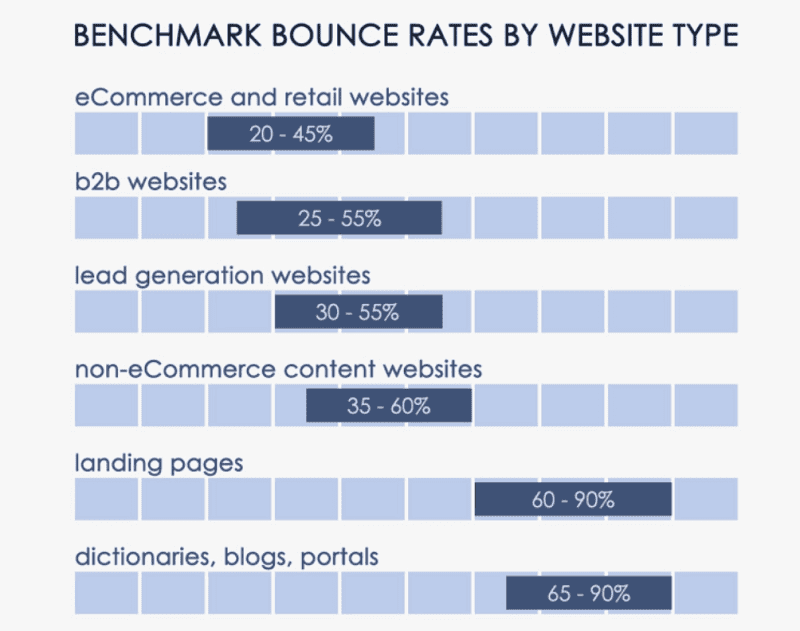If you’re not taking user experience signals into account, you’re missing out on a huge opportunity for better search engine rankings.
In this post, we’ll discuss what user experience signals are and why they’re so important for SEO.
We’ll also give you some tips on how to improve your website’s user experience. So if you want to stay ahead of the competition, make sure to read this post!
What Are User Experience Signals?
User experience signals are all the signals that Google uses to determine how well a website performs from a user’s perspective.
In particular, they look at how people engage with results and then use that information to assess content quality.
Here are the five most important user experience signals you should understand:
- Dwell Time
- Bounce Rate
- Pogo sticking
- Organic CTR
- Core Web Vitals
Why Are User Experience Signals Important for SEO?
Google has always been focused on providing the best possible user experience. That’s why it’s so important for a better SEO.
If your website provides visitors with a great experience, Google will likely reward you with higher search engine rankings.
Conversely, if your website has a poor user experience, you will probably lose rankings.
So, if you want to ensure that your website ranks well on Google, you need to make sure that your users are happy.
Let’s see all the factors in detail.
Dwell Time
Dwell time is the amount of time that someone spends on your website after they click on your result in Google (and before returning to the SERPs).
A long dwell time indicates that people are engaged with your content and find it valuable.
On the other hand, a short dwell time indicates that people are not finding your content interesting and will likely click back to the search results.
Dwell time is a strong indicator of content quality, which is why it’s so important for SEO.
If you want to improve your dwell time, make sure to create high-quality content that people will find useful and engaging.
Another good strategy is to use internal linking to keep people on your website for longer.
Remember, if you can also match search intent and deliver a great user experience, you’re on the right track!
Bounce Rate
Bounce rate is the percentage of people who leave your website after viewing only one page.
A high bounce rate indicates that people are not finding what they’re looking for on your website.
On the other hand, a low bounce rate indicates that people are engaged with your content and are likely to stick around for longer.
But what is a good bounce rate score?
Well, it depends on your website and your industry.
For example, a website in the news industry will have a higher bounce rate than a website in the e-commerce industry because people usually only visit news websites to read one article and then leave.
On the other hand, people usually stay on e-commerce websites for longer because they’re looking to buy something.
Here are the benchmark bounce rates by website type:

To improve your bounce rate, make sure to create content that is relevant to your audience and matches their search intent.
In addition, use attractive visuals and design elements to keep people engaged with your website.
And lastly, make sure your website is fast and easy to use. If people can’t find what they’re looking for right away, they’ll leave your website and go to your competitor’s.
Pogo Sticking
Pogo sticking is when someone clicks on a result in Google but doesn’t find what they’re looking for and clicks back to the search results.
It is a strong indicator of website quality.
So, if you want to reduce pogo sticking, make sure to create content with added value for your audience.
Another essential thing to pay attention to is the search intent.
There are four main types of search intent:
- Navigational: people are looking for a specific website.
- Informational: people are looking for information about a topic.
- Transactional: people are looking to buy something.
- Local: people are looking for businesses near them.
Be sure to analyze the search intent of your audience before creating content for them.
If you can match the search intent and deliver a great user experience, you’re on the right track!
Organic CTR
Organic CTR is the percentage of people who click on your result on Google.
A high organic CTR indicates that your result is attractive to users.
To improve your click-through rate, make sure to create a compelling title and meta description that accurately describes your content.
Also, remember to use short and attractive URLs that accurately describe your content.
Finally, use schema markup to make your result stand out in the search results. If you can get rich snippets or featured snippets, you will be well on your way to a high organic CTR!
Core Web Vitals
Core web vitals are a set of metrics that measure the user experience of your website.
There are three core web vitals:
- Largest Contentful Paint (LCP): This measures how long it takes for the largest element on your page to load.
- First Input Delay (FID): This measures how long it takes for your page to respond to a user’s input.
- Cumulative Layout Shift (CLS): This measures how much your page content shifts around while loading.
Core web vitals are a strong indicator of website quality, which is why they’re so important for SEO.
If you want to improve your core web vitals, make sure to create a fast, responsive website that doesn’t shift around while loading.
Final Words
User experience signals are essential factors in SEO.
If you want to rank well on Google, make sure to focus on delivering the best user experience possible.
Pay attention to dwell time, bounce rate, pogo sticking, organic CTR, and core web vitals.
And most importantly, create high-quality content that is relevant to your audience and matches their search intent.
If you can do all of these things, you’re on your way to ranking well on Google.
Featured Image Credit:
The post User Experience Signals: The Essential SEO Factors appeared first on ReadWrite.


Comentarios recientes